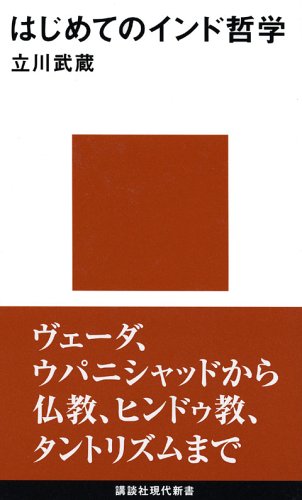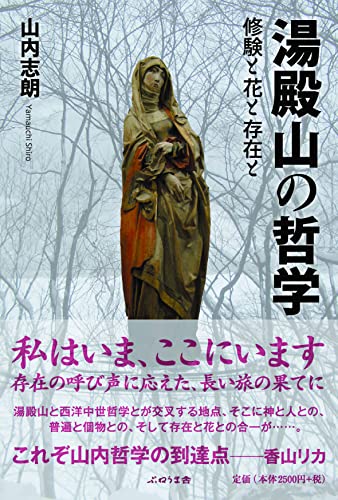- 著者
- 小川 哲哉
- 出版者
- 学術雑誌目次速報データベース由来
- 雑誌
- 教育哲学研究 (ISSN:03873153)
- 巻号頁・発行日
- vol.83, pp.43-59, 2000
In der pädagogischen Forschung wird die deutsche Jugendbewegung als eine Bewegung der Jugend zur Selbsterziehung angesehen und neue Formen des Verhältnisses der beiden Geschlechter untereinander in der Jugendbewegung werden für wichtig gehalten. Obwohl das Sexualitätsproblem, vor allem im Bezug auf das Problem von Geschlechtskrankheiten bei einer pädagogischen Betrachtung der Jugendbewegung wichtig war, wurde es bisher nicht lebhaft diskutiert. In diesem Aufsatz wird festgestellt, daß sich die Jugendbewegung mit dem Sexualitätsproblem unter dem Einfluß der Sexualpädagogik jener Zeit, vor allem der abstinenzlerischen sexualpädagogischen Auffassungen F. W. Foersters, ernstlich befaßt hat.<BR>Die Hauptthese dieser Arbeit lautet, daß die Sexualitätsdiskussion in der deutschen Jugendbewegung eine Ambivalenz zur Folge hatte. Einerseits betätigten sich die Jugendlichen unter Berufung auf die Keuschheit im Sinne einer Lebensreform und hielten sich an sexuelle Abstinenz bis zur Eheschließung. Ihre Sexualmoral offnet den Weg für ein gleichberechtigtes Verhältnis der Geschlechter im Sinne einer Kameradschaft. Auf der anderen Seite vermieden die Jugendlichen, das Sexuelle offentlich zu diskutieren, so daß es als Privatsache betrachtet wurde, wenngleich die Jugendlichen das Sexuelle keineswegs ganz außer acht lassen konnten. Schließlich haben die Jugendlichen die Moglichkeit einer Losung des Sexualproblems selbst unterdrückt.<BR>Bisher wurde die deutsche Jugendbewegung für eine Bewegung von Jugendlichen zur Selbsterziehung, indem sie sich von den Erwachsenen emanzipierten, gehalten. In Wirklichkeit aber haben sich die Jugendlichen in Hinsicht auf das Sexualitätsproblem einer Selbstunterdrückung unterworfen.
- 著者
- ヴォルフ エルンスト・アマデウス 中村 悠人 中村 悠人
- 出版者
- 關西大學法學會
- 雑誌
- 関西大学法学論集 (ISSN:0437648X)
- 巻号頁・発行日
- vol.62, no.6, pp.2526-2556, 2013-03
- 著者
- 満田 剛
- 出版者
- 東洋哲学研究所
- 雑誌
- 東洋哲学研究所紀要 = Bulletin of the Institute of Oriental Philosophy (ISSN:09120610)
- 巻号頁・発行日
- no.33, pp.151-171, 2017
1 0 0 0 OA 中世真言宗における浄土思想解釈 : 道範『秘密念仏抄』をめぐって
- 著者
- 佐藤 もな
- 出版者
- 東京大学大学院人文社会系研究科・文学部インド哲学仏教学研究室
- 雑誌
- インド哲学仏教学研究 (ISSN:09197907)
- 巻号頁・発行日
- vol.9, pp.80-92, 2002-09-20
Dohan 道範(1178?-1252) was a monk of the Shingon school 真言宗 on Mt. Kōya 高野山 in the early Kamakura 鎌倉 period. The aim of this paper is to investigate his ideas on the Pure Land 浄土 in the Himitsu-nenbutsu-shō 秘密念仏抄, one of his representative works on Amida Buddha 阿弥陀仏 and the Pure Land from the viewpoint of Esoteric Buddhism. In this work, Dōhan quotes some passages from the works of Nakanogawa Jippan 中川実範(?-1144) and Kakuban 覚鑁(1095-1143) as pioneers of the esoteric interpretation of the Pure Land. He presents a new system of ideas on the basis of their works. I examine them from three points of view, that is, his ideas on Amida Buddha, the Pure Land, and myōgō 名号 or the Buddha's name, and consider how Dohan accepted earlier ideas and what the characteristics of his ideas were. According to Dōhan, conventional ideas about the Pure Land and Amida are at an immature stage of understanding, and at a deeper level Amida is thought to be the same as Dainichi Nyorai 大日如来, the main Buddha of Esoteric Buddhism. He also states that the land of Gokuraku 極楽浄土 is not actually in the west but in the minds of all creatures, and that raigō 来迎, or Amida's coming to meet a dying person, does not mean that Amida actually comes to take him to the real Pure Land, but that with some training he sees the Buddha in his mind. With regard to myōgō, he developed Kakuban's idea that every word is a mantra 真言, and asserts that chanting Amida's name and chanting mantras have quite the same meaning. In addition, Dohan asserts that various virtues are included in the three letters of A-mi-da. And in conclusion, he even says that the entire world of a maņdala is included in the name of Amida. One might venture to say that the interpretation of the name of Amida in the Shingon school attained its ultimate stage in his system. In this way, Dōhan radically reinterpreted the concepts of Amida, the Pure Land, myōgō, and so on from his position based on the doctrines of Esoteric Buddhism. He considered that the ideas of the Pure Land and Amida Buddha were part of Shingon doctrine and insists on the superiority of Esoteric Buddhism by subsuming these ideas under the system of Esoteric Buddhism. Thus, his ideas were different from a ""fusion"" of Esoteric Buddhism and Pure Land Buddhism, which was a characteristic of the interpretation of the Pure Land in the Shingon school before him.
1 0 0 0 IR アダム・スミスの経済思想と経済的自由主義
- 著者
- 山本 勝也
- 出版者
- 山口大学哲学研究会
- 雑誌
- 山口大学哲学研究 (ISSN:0919357X)
- 巻号頁・発行日
- vol.20, pp.97-117, 2013
Economics has a great influence on thoughts and policies in modern society. Especially, recent neoliberal reforms are supported by beliefs on the freedom of economic activities and the adjustability of market mechanism. It is often said that Adam Smith advocated economic liberalism. Relying mainly on The Theory of Moral Sentiments and The Wealth of Nations, this paper shows the economic thought of Adam Smith and his intentions. Our results indicate that Smith didnʼt claim economic liberalism unconditionally but his economic thought is not enough to defend it. And we discuss the recent situation of economics and neoliberalism. Finally, we conclude that we need an interdisciplinary approach for the revolution in economics.
1 0 0 0 はじめてのインド哲学
1 0 0 0 研究例会報告要旨
1 0 0 0 OA 西周の《区別-連結》の哲学 ―「実証主義」と「天の思想」を包括する体系 ―
- 著者
- 森下 直貴
- 出版者
- 浜松医科大学
- 雑誌
- 浜松医科大学紀要 (ISSN:09140174)
- 巻号頁・発行日
- vol.31, pp.1-21, 2017-03-30
In Japanese history of philosophy, Amane Nishi is regarded not as a genuine philosopher but as an enlightenment-thinker, whereas he is unanimously praised as “the father of Japanese philosophy.” The reason is that he was the positivist as well as the utilitarian. However, he expressed the faith in “Ten (i.e. Heaven),” Japanese metaphysical or divine entity. The concept of “Ten” is inherited from Kogaku school of Confucianism in Tokugawa era, and derived from Kukai’s esoteric Buddhism in ancient era. Therefore, Nishi’s philosophy remains vague yet, as long as the relation between positivism and “Ten” within his thought is not elucidated. This paper condenses Nishi’s philosophy into three theses, aiming to comprehend it completely. The first is〈 Relation i.g. “Ri (Reason)”〉 thesis. Nishi raised it against Shushigaku school of Confucianism. Compering this thesis with thoughts of Shushigaku, Kogaku, or Conte and J.S.Mill, Nishi’s philosophy is characterized as the perspective of distinguishing and relating every thing in the actual world. The second is〈Knowledge / Faith〉 thesis, his fundamental view on religion. Interpreting implications of this thesis, the structure of relationships among science, metaphysics, religion and morality is lighted up. Their co-related structure of every thing, which is mediated by “Ri” and suspended by “Ten,” is the Nishi’s very system of philosophy. The third is〈 Feeling = Brain〉 thesis. This is the basis of bringing〈 distinction-connection〉 into the world. Here is followed how this thesis makes sciences unified, building a bridge between physiology and psychology. And also how it makes utilitarian ethics systematic, integrating personal, inter-personal and societal levels. The core of Nishi’s philosophy exists in his perspective of〈 distinction-connection〉. This is one of the pictures of the “philosophical thinking.” From this perspective, he tried to divide and integrate all actual beings, including human activities, for example, science and philosophy, metaphysics and religion, physics and psychology, physiology and psychology, simple and complex feeling, religion and morality, morality and law, and so on. His “system of philosophy” embodies itself in such inclusiveness. And in Japanese metaphysical tradition, the actual world substantially means “Ten and Chi (i.e. Heaven and Earth)”. Therefore, his philosophy also includes the first attempt of “Japanese metaphysics.”
1 0 0 0 湯殿山の哲学 : 修験と花と存在と
- 著者
- 岩田 孝
- 出版者
- 早稲田大学大学院文学研究科
- 雑誌
- 早稲田大学大学院文学研究科紀要. 第1分冊, 哲学 東洋哲学 心理学 社会学 教育学 (ISSN:13417517)
- 巻号頁・発行日
- vol.56, pp.5-17, 2011-02-26
- 著者
- 児玉 正幸
- 出版者
- 日本医学哲学・倫理学会
- 雑誌
- 医学哲学 医学倫理 (ISSN:02896427)
- 巻号頁・発行日
- vol.21, pp.167-175, 2003
The medical staff of Obstetrics and Gynecology Department, Kagoshima University was considering plans to conduct clinical trials to test the embryos of Duchenne muscular dystrophy patients, but they were unable to gain approval from the Japan Society of Obstetrics and Gynecology. Groups and organizations that support the handicapped pointed out that there are problems with trying to make life and death decisions based on such tests. They argued that such testing implies a desire to lower the level of social services for the handicapped and to inflame the public's prejudices. In other words, the tests are considered as another example of discrimination towards families with a history of genetic disease, in the tradition of discrimination in jobs and marriage. However, as long as the freedom of the clients (the parents of the unborn child) for whom the tests are conducted is preserved, and their right to decide what to do with the results is protected, this reproduction medical technology does not threaten the constitutional rights of the handicapped, as provided in Articles 13, 14, and 25 of the Japanese Constitution. Allowing parents to decide whether to give birth to a handicapped child is not inconsistent with a policy aimed at improving welfare services.
- 著者
- 八幡 さくら
- 出版者
- 東洋大学国際哲学研究センター
- 雑誌
- 国際哲学研究 = Journal of international philosophy (ISSN:21868581)
- 巻号頁・発行日
- no.7, pp.13-16, 2018-03
1 0 0 0 IR 現代に甦るシェリング : 人間・自然・歴史と悲劇的なもの
- 著者
- 渡邊 二郎
- 出版者
- 放送大学
- 雑誌
- 放送大学研究年報 (ISSN:09114505)
- 巻号頁・発行日
- vol.19, pp.47-77, 2001
シェリングは、18世紀末から19世紀前半にかけて活躍したドイツ観念論の哲学者であるが、先行のフィヒテに対しては自然哲学を、後続のヘーゲルに対しては積極哲学を提唱した点で、独自性をもつ。それは結局、自然の根源性と、論理で割り切れない歴史の不透明な現実とを、強調したことにほかならない。その自然観と歴史観は、21世紀を迎えた私たちに対しても大きな示唆を与える。なぜなら、現代は、自然の生態系との共生なくしては文明社会の存立が危ぶまれる時代であり、また、その地球上の共同社会のうちに未曾有の紛争や軋轢が生じている激動の時代、すなわち人類の歴史の行方が到底定かには見通せない時代だからである。シェリングは、終生、自然と歴史という二つの大きな問題場面を共に視野のなかに収めながら、包括的な思想体系を樹立することに精魂を傾けた哲学者であった。その点は、彼の諸著作に即して具に立証されうる。その際、とくに注意すべきなのは、自然のなかから人間が生まれ、その人間において自由と精神が出現し、こうして一方で、人間は、自然の頂点に立つとともに、他方で、宇宙の場を住処としており、人間は、精神と歴史という新しい過程の出発点に立つ者として、重い責務を背負っているとシェリングの見なしている点である。シェリングの自然哲学のうちには、生きた自然の強調、自然と精神の同根性への着眼、自然の自己組織性の指摘、自然の内的構成の原理的把握、物質の重視といった思想が認められ、きわめて現代性に富む考え方が提起されている。とりわけ、注意すべきなのは、万物を生み出す根源的な働きが、物質のうちに存在根拠を置くという仕方で具体的に展開すると見なされている点である。ただし、最初に現存するものとしてその物質のうちから、さらにより高次のあり方が自然の過程として順次展開されてゆくとシェリングは見ており、けっしてたんなる機械論的唯物論を説いたのではないことは付言するまでもない。自然のうちから、やがて人間が現れる。人間において、とりわけ重要なのは、人間が、その自由と精神の活動を、共同社会において、実践的行為によって展開してゆくとき、そこに、自他の自由を互いに尊重し合う世界市民的な法体制が、人類の歴史を通じて、ほんとうに実現されるか否かにあるとシェリングが考えている点である。しかし、歴史とは、いかにそこで人間が確信にみちて行為しても、けっして思い通りにはならないところにその本質があるとシェリングは見なしている。そこには、自由と必然性との葛藤という悲劇的なものが潜み、それを調停する絶対者を知りえないのが人間の運命であるとシェリングは考えている。したがって、人間がなしうることは、ひとえに、歴史のうちに摂理があることをひたすら信じて、苦難のなかを理想に向けて努力し精進するという過程だけなのである。こうした悲劇的な人間観が、初期から晩年に至るまで、シェリング哲学の根底に伏在していると見てよい。
1 0 0 0 IR 近代イギリス道徳哲学における利己心の問題
- 著者
- 柘植 尚則
- 出版者
- 慶應義塾大学倫理学研究会
- 雑誌
- エティカ (ISSN:18830528)
- 巻号頁・発行日
- no.8, pp.1-44, 2015
1 17世紀2 18世紀3 19世紀4 議論の特徴
1 0 0 0 「論より証拠」--科学哲学の1つの前提
- 著者
- 井山 弘幸
- 出版者
- 新潟大学人文学部
- 雑誌
- 人文科学研究 (ISSN:04477332)
- 巻号頁・発行日
- no.70, pp.p139-157, 1986-12
1 0 0 0 アリストテレス「形而上学」における「第1哲学」再建の可能性
- 著者
- 篠田 武
- 出版者
- 東京大学文学部
- 雑誌
- 東京大学文学部哲学研究室論集 (ISSN:09162666)
- 巻号頁・発行日
- no.12, pp.p139-149, 1993
1 0 0 0 バークリー『ハイラスとフィロナスの三つの対話』訳解(1)
- 著者
- 宮武 昭 宮武 昭
- 出版者
- 中央大学
- 雑誌
- 紀要. 哲学科 (ISSN:05296803)
- 巻号頁・発行日
- vol.50, pp.41-106, 2008-03
1 0 0 0 OA 地球論におけるデカルト対ガッサンディ : 特にステノとの関係を考慮して
- 著者
- 山田 俊弘
- 出版者
- 東京大学教養学部哲学・科学史部会
- 雑誌
- 哲学・科学史論叢 (ISSN:13446185)
- 巻号頁・発行日
- vol.6, pp.131-167, 2004-01-31

